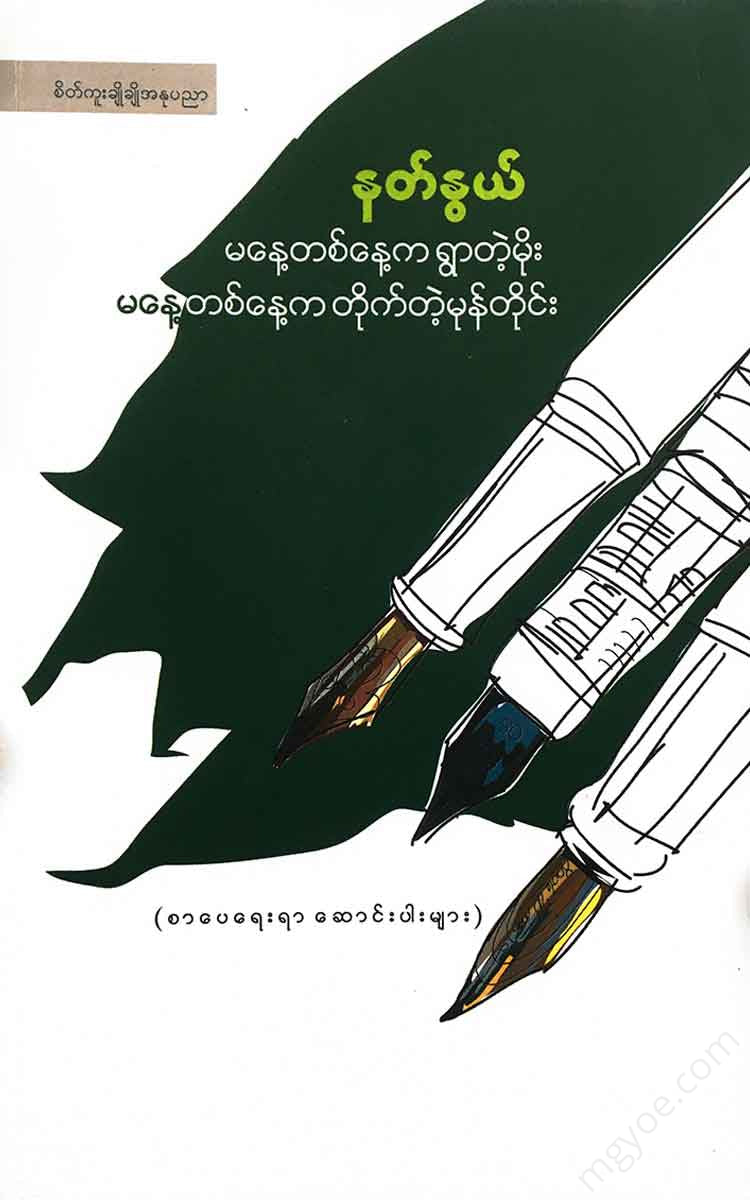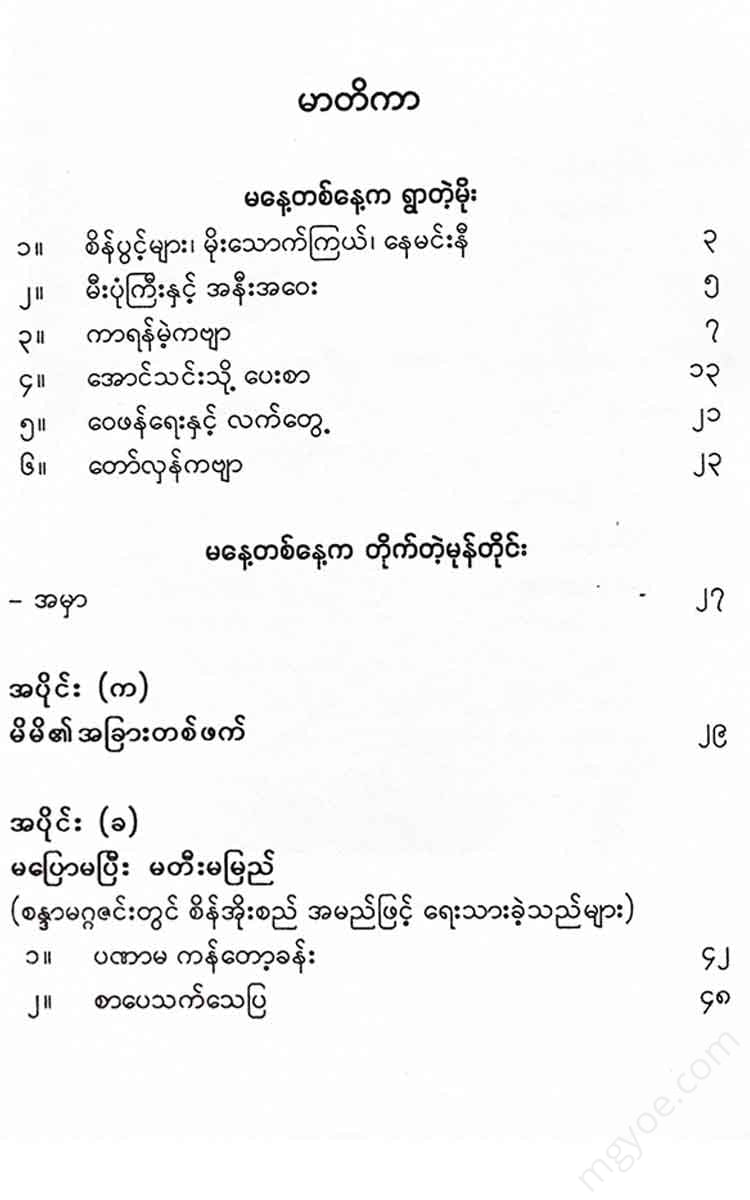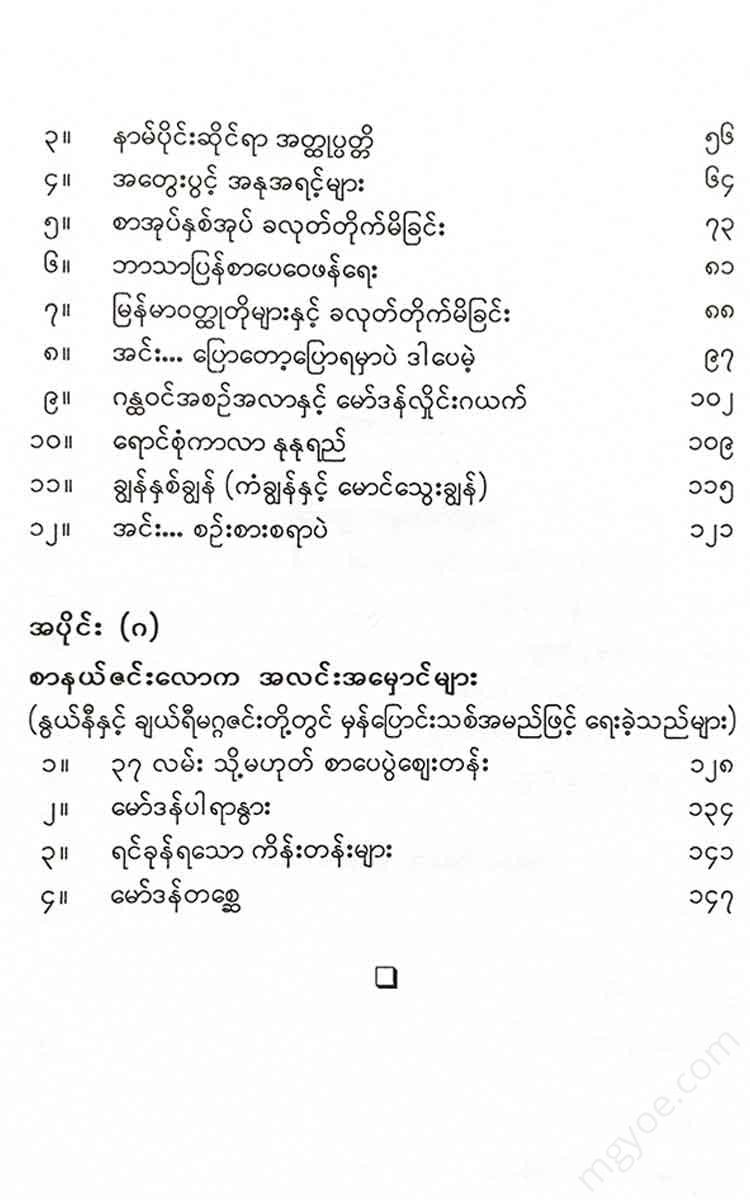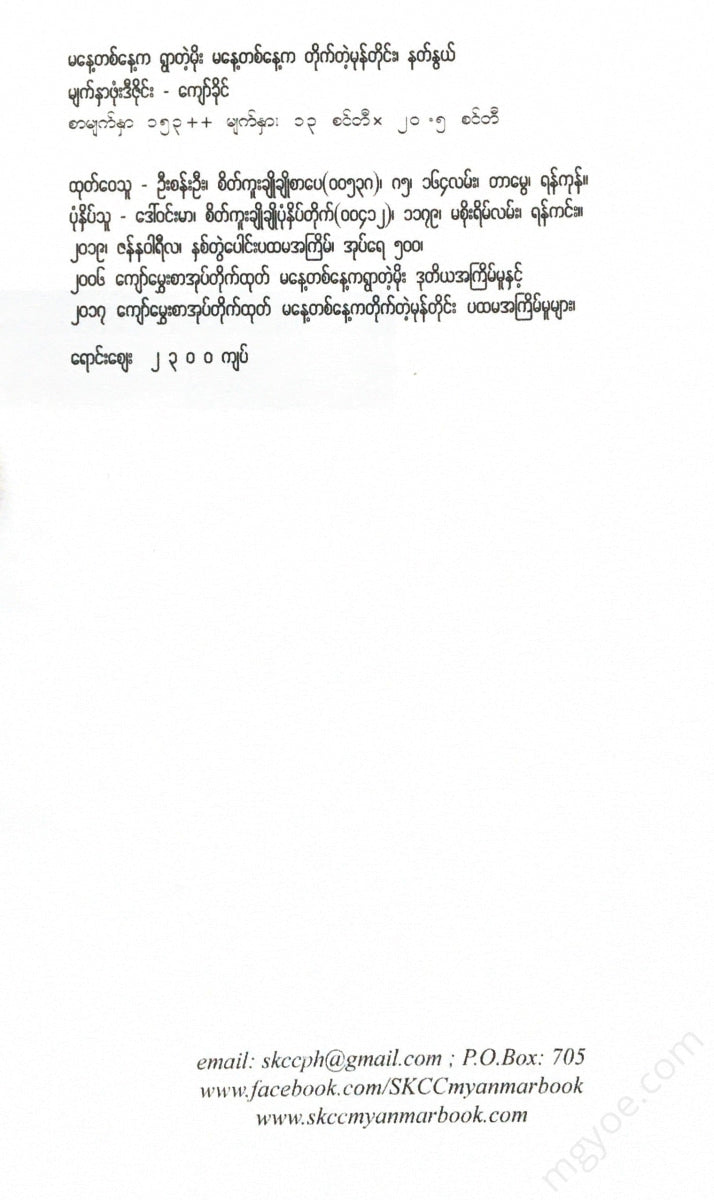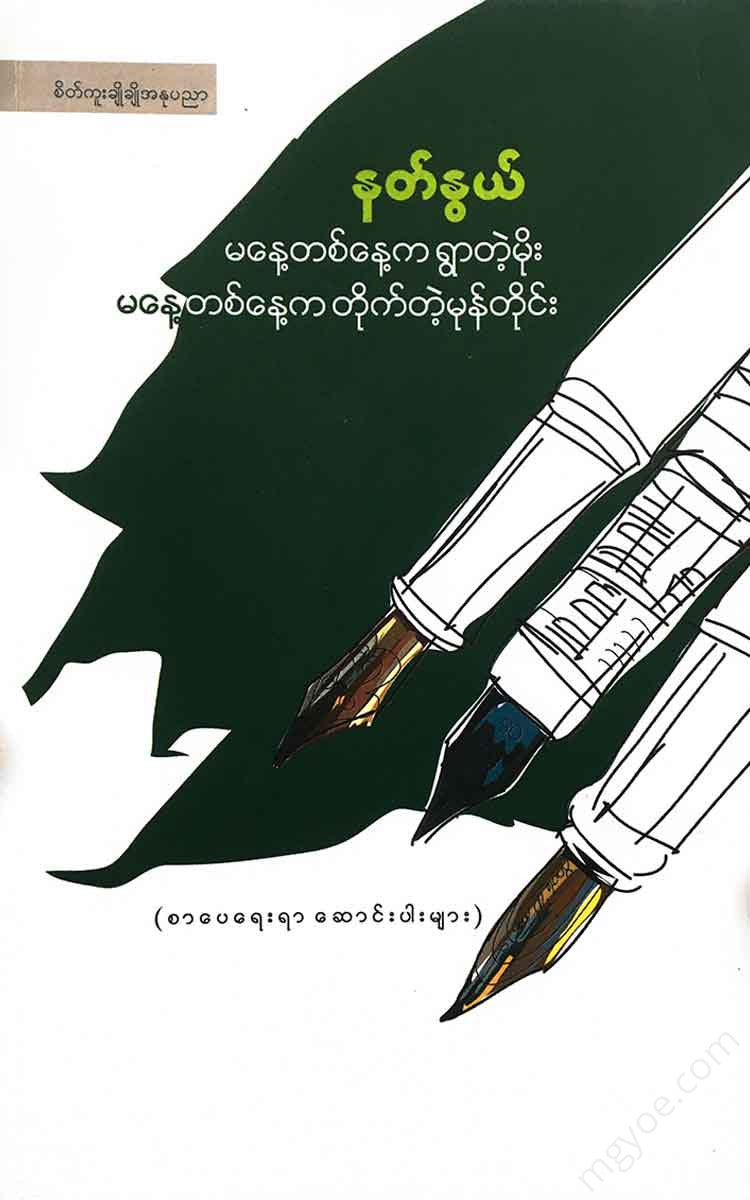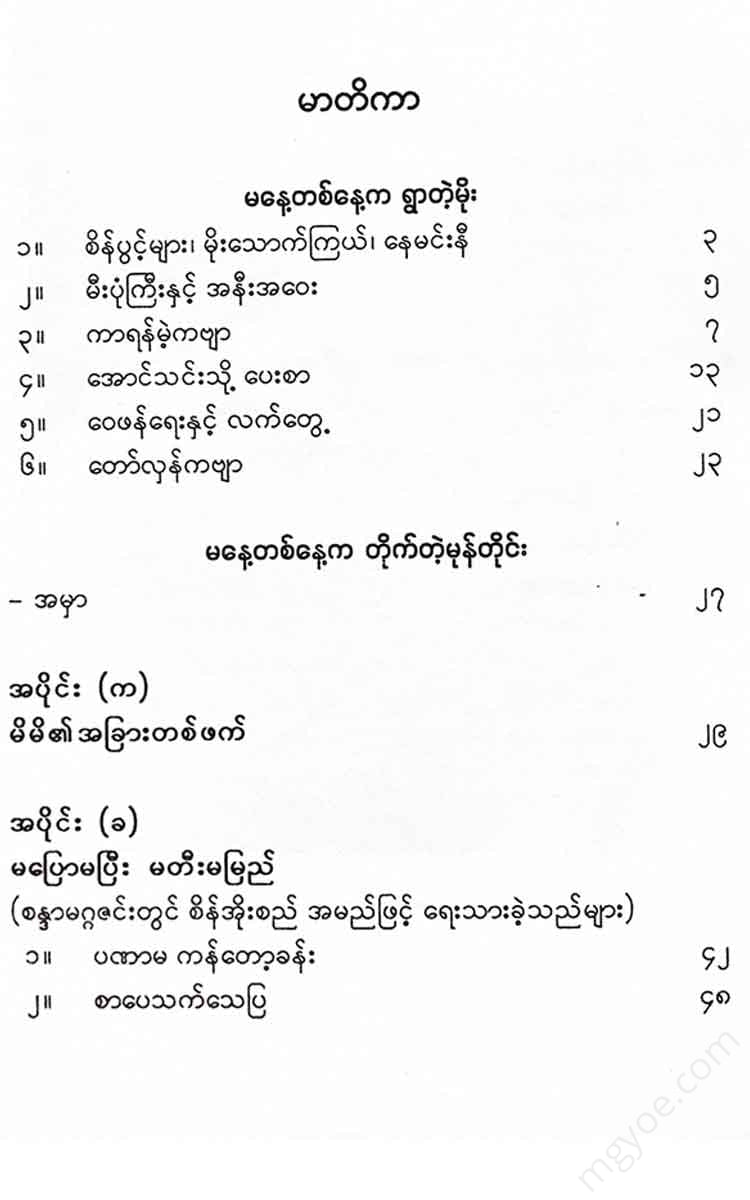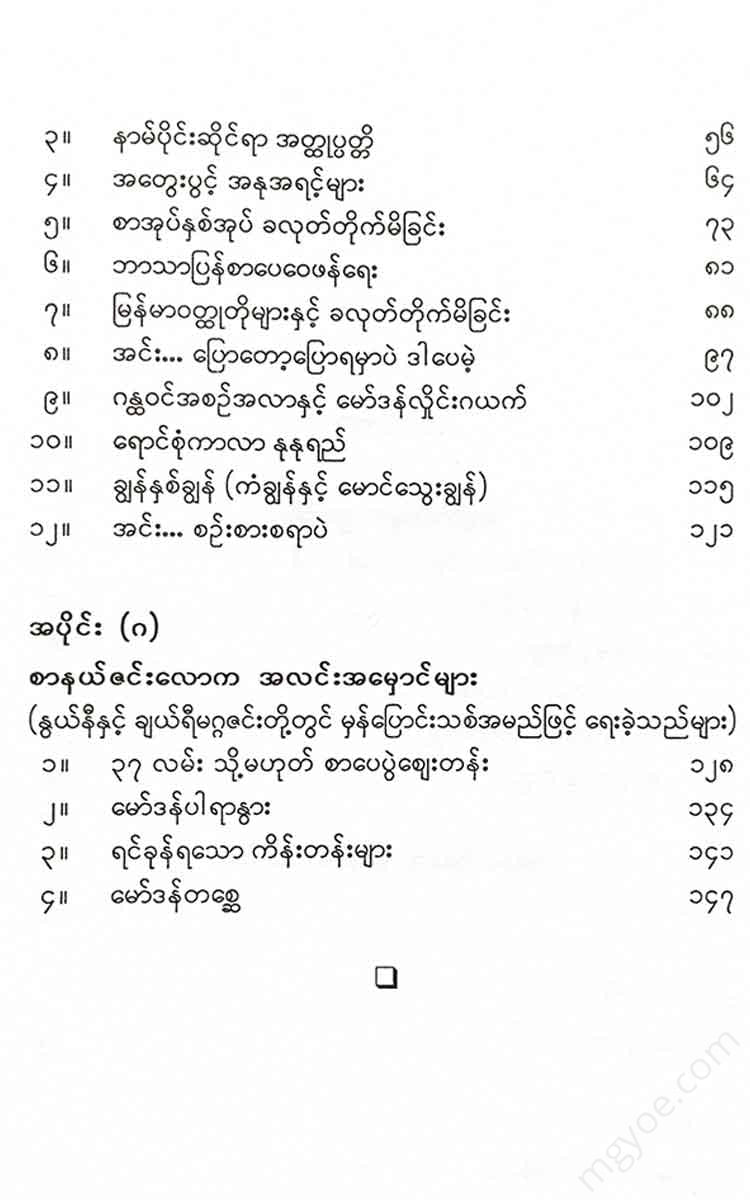စိတ်ကူးချိုချိုစာပေ
Nat Nwe - The rain that fell the day before yesterday, the storm that struck the day before yesterday
Nat Nwe - The rain that fell the day before yesterday, the storm that struck the day before yesterday
Couldn't load pickup availability
The night was covered in white snow, but it was still hazy. I couldn't see the path I was supposed to take.
The snowstorm is blowing hard. The three thousand forests are sighing heavily. The battlefield is in the throes of battle.
Hey, listen up.
Are there any songs that are so haunting? Ananthuriya with his eyes wide open under the sword of the powerful son of the king, Letwe Sundara shivering by the fire, Our king Natshinnaung shedding tears on the battlefield, Hlaing, who is deeply moved at night, The golden crowns that float from the monasteries -
Oh, oh, the sound of bullets, the rabbit hunters, the frog hunters, the farmers of the mountains, the ministers, the kings.
It is better to die than to be healed. The venerable Sibanni, the wedding of the monk, the boy's commentary, the great master, the monk himself.
Screams, gunshots.
"Modern San" from the jungle, "Red Dragon" from the city center, "Tara" from the island of Tahiti.
The voice of the revolutionary people's burning demands, the revolutionary
Literature
(b)
Nights of the Divine Moon.
It was gloomy. The snow was blowing, the flowers were blooming, and the morning star was shining, and the sky was turning pink.
Oh, the sun is red, the sun is bright, there are no diamonds. The sun is red.
Moe Wai Literature Magazine Headline, December 1971
Near and far from the bonfire
If we want to evaluate the literature of a particular era, we must evaluate it in relation to the conditions of that era. Especially when evaluating literature from the past, it must be consistent with that era. It is not fair to judge it based on today's conditions, today's views, and today's criticisms.
Isn't it said that literature is the mirror of the times? A piece of literature can only represent the era in which it was born.
If there were labor, peasant, and student movements in a given era, we would find the colors of those movements reflected in the literature of that era. The greater the scale and momentum of the movement, the greater the extent of the reflection.
To illustrate, if there is a fire, there will be a reflection of light. If the fire is small, the color reflected on our pages will be only a little bit. If the fire is large, the pages will be red. If there is no fire at all, it will be a dark age.
There is one thing. If there was a huge bonfire at one time, but the pages were dark or just a little pink, it would be because those pages were not near the bonfire, but were isolated and peaceful in a distant place.
Therefore, if we want to look at contemporary literature, we must first look at the torches of that era. If we want to look at Tara magazine, we must first look at the great bonfire of anti-imperialist, national liberation, and socialist struggle that was burning brightly between 1946 and 1949.
Let's continue to learn how close or far our pages were from the flames of revolution.
Headline of Moe Wai Literary Magazine, January 1972
